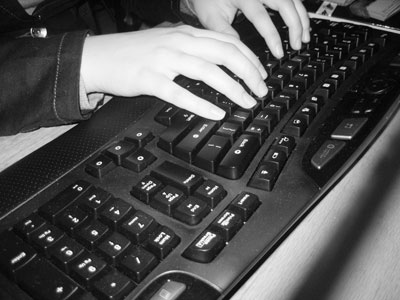All Nonfiction
- Bullying
- Books
- Academic
- Author Interviews
- Celebrity interviews
- College Articles
- College Essays
- Educator of the Year
- Heroes
- Interviews
- Memoir
- Personal Experience
- Sports
- Travel & Culture
All Opinions
- Bullying
- Current Events / Politics
- Discrimination
- Drugs / Alcohol / Smoking
- Entertainment / Celebrities
- Environment
- Love / Relationships
- Movies / Music / TV
- Pop Culture / Trends
- School / College
- Social Issues / Civics
- Spirituality / Religion
- Sports / Hobbies
All Hot Topics
- Bullying
- Community Service
- Environment
- Health
- Letters to the Editor
- Pride & Prejudice
- What Matters
- Back
Summer Guide
- Program Links
- Program Reviews
- Back
College Guide
- College Links
- College Reviews
- College Essays
- College Articles
- Back
The One to One Initiative
Every once in a while, it is brought to the public eye how technology is the future of education. We are told how textbooks will soon be removed from the school environment, and how even the use of printers will be minimized. But what are we doing about this change? Recently, my high school has stepped into the future of learning and adopted a program called the One to One initiative. Through this new addition to my own high school, each student pays an insurance fee, and then receives their very own Macbook Air with an 11 inch display that they are allowed to keep from the first day of school to the last. The addition of these mini laptops has changed the way teachers teach and students learn, and although they may be being used incorrectly at the moment, in my opinion they could have outstanding potential for the future.
One of the most frustrating and negative aspect about the One to One initiative is the unused software. These brand new laptops come equipped with some of the most advanced learning softwares, including Photoshop, Evernote, Dropbox, Dill Client, and more. These programs are extremely difficult to use, and without any information sessions to learn how to use them, both students and teachers are required to fend for themselves. As a student that is focused primarily on engineering, not once has any teacher attempted to integrate these advanced softwares into the curriculum. The majority of teachers are completely in the dark on the amazing things that these machines can do, and it is extremely frustrating for students who would like to take advantage of these softwares. “It really is a shame,” quotes one student, “that there is software on our computers that only one percent of students know how to use, let alone the faculty body.”
At the start of the 2014-2015 school year, my school proclaimed that it was “going paperless” and eliminating as much paper handouts and textbooks as possible. The goal was to have everything, including quizzes, tests, and textbooks, on the school laptop. Almost every student and teacher knows that the school has gone paperless, but in fact there is just as much paper circulating the school. It is truthfully unacceptable how some teachers still print out small, unimportant handouts instead of posting it to our online school website platform, Schoology. After the failed attempts to cut down on paper, the Macbook Airs feel like just another thing to carry around all day. After just the first marking period, I had a stack of paper larger than ever in my room. However, there are some benefits to paper and pencil.
According to the NY Times, “Children not only learn to read more quickly when they first learn to write by hand, but they also remain better able to generate ideas and retain information” (What’s Lost as Handwriting Fades). This is a very important idea to consider when discussing the full-time use of laptops. Hand writing notes or documents will create a unique pattern in a student’s brain, allowing them to remember it much quicker, and create new learning pathways. Typing information into a laptop can potentially be dangerous to a student who is not proficient in memorization or note taking. This being said, my school allows for students to use tablets that connect to the computer, essentially allowing them to still write their notes down. However, these tablets are expensive, and not very easy to use. Hand written documents are still extremely viable within the school, and it will be a very long time before they are eliminated.
In my school, there are multiple other advances in technology that are currently being implemented into the school. For example, the printers are very smoothly used in conjunction with student school IDs and personal laptops. Also, instead of desktops, in some rooms, there are larger monitors that connect with the Macbook Air to allow for a desktop experience. These technological advances truly help to bring the experience and initiative together, and they work very well.
In conclusion, the One to One initiative is a very controversial topic. It seems that the school is generally split, with one half liking the initiate and the other disliking it. While they are very powerful and ready for use, most students and teachers do not even attempt to use a lot of the software. Although the school has gone “paperless”, there is still an absurd amount of paper still floating around the school. Since handwriting stimulates the brain and allows for a better education, one may argue that the laptops are actually harming the school. With this being said, the technology used in conjunction with the laptops do in fact aid the program itself. In my opinion, there are many changes to be done to the One to One initiative, however, it does have the potential to be a great program.

Similar Articles
JOIN THE DISCUSSION
This article has 0 comments.

This article is dedicated to my dear friend Thon Maker, who inspires me each and every day.